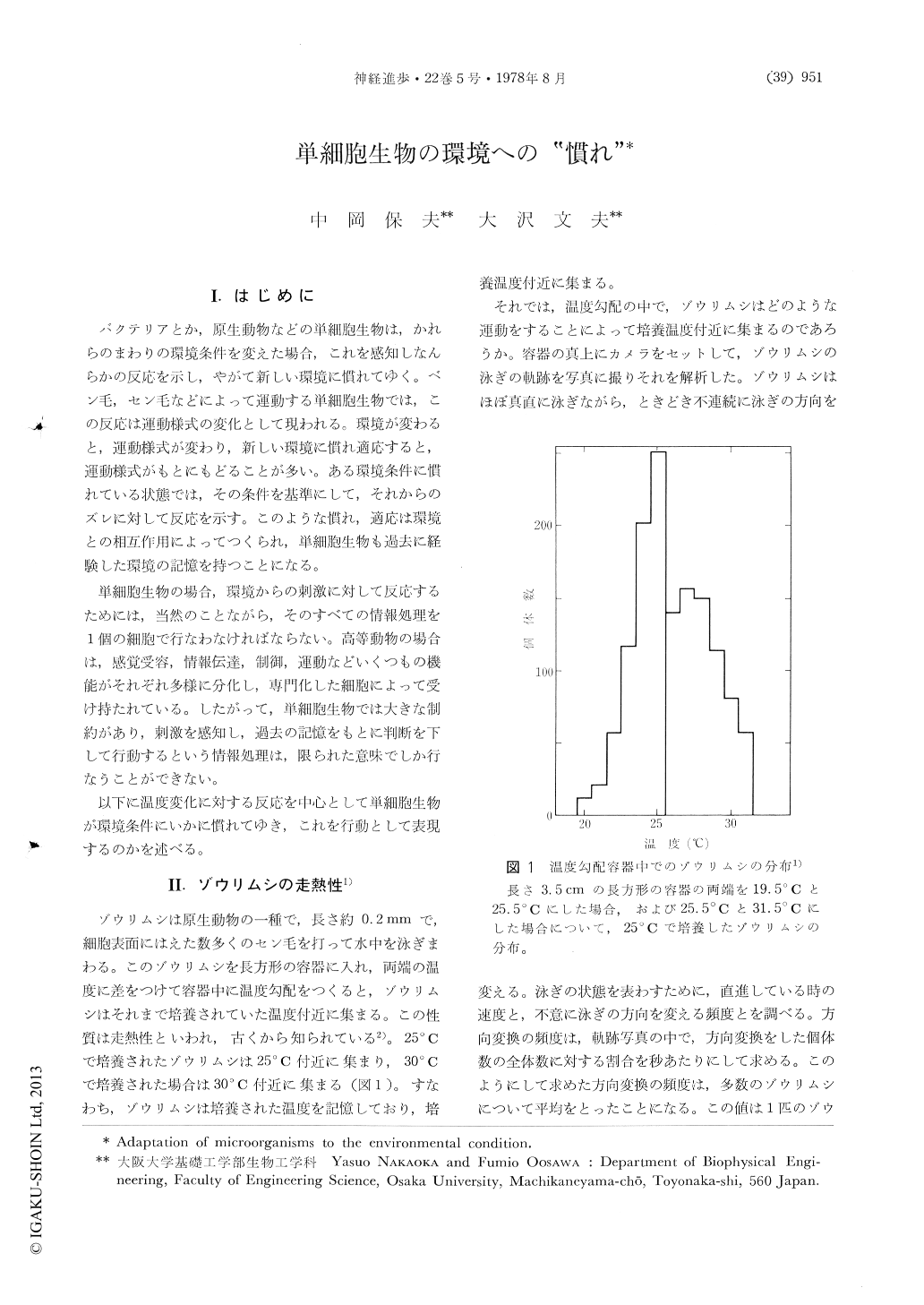Japanese
English
- 有料閲覧
- Abstract 文献概要
- 1ページ目 Look Inside
I.はじめに
バクテリアとか,原生動物などの単細胞生物は,かれらのまわりの環境条件を変えた場合,これを感知しなんらかの反応を示し,やがて新しい環境に慣れてゆく。ベン毛,セン毛などによって運動する単細胞生物では,この反応は運動様式の変化として現われる。環境が変わると,運動様式が変わり,新しい環境に慣れ適応すると,運動様式がもとにもどることが多い。ある環境条件に慣れている状態では,その条件を基準にして,それからのズレに対して反応を示す。このような慣れ,適応は環境との相互作用によってつくられ,単細胞生物も過去に経験した環境の記憶を持つことになる。
単細胞生物の場合,環境からの刺激に対して反応するためには,当然のことながら,そのすべての情報処理を1個の細胞で行なわなければならない。高等動物の場合は,感覚受容,情報伝達,制御,運動などいくつもの機能がそれぞれ多様に分化し,専門化した細胞によって受け持たれている。したがって,単細胞生物では大きな制約があり,刺激を感知し,過去の記憶をもとに判断を下して行動するという情報処理は,限られた意味でしか行なうことができない。
Abstract
Paramecium cells show thermotaxis. When placed in a temperature gradient, they come to the temperature where they were cultured. In the gradient, those swimming toward the culture temperature show low frequency of turning, whereas those swimming in the opposite direction show high frequency of turning.
Swimming cells sense the temperature gradient as the temporal change of temperature. When the temperature is suddenly dropped from theculture temperature to lower temperature, the turning frequency is transiently increased and when it is recovered to the culture temperature, the frequency is transiently decreased.

Copyright © 1978, Igaku-Shoin Ltd. All rights reserved.


